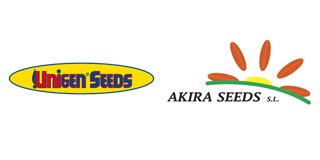
UNIGEN SEEDS SPAIN
Blueberry CA storage shows a significant reduction of decays and molds incidence compared to MAP storage
The blueberry (Vaccinium spp) exportations from Chile to distant markets such China and Korea has been rising considerable in the last four seasons. In this new scenery the time from harvest to consumer is close to 50 days. Thereby, the evaluation and validation of postharvest technologies that permit reach with a good fruit quality to export markets, is required.
05 June, 2017
The blueberry (Vaccinium spp) exportations from Chile to distant markets such China and Korea has been rising considerable in the last four seasons. In this new scenery the time from harvest to consumer is close to 50 days. Thereby, the evaluation and validation of postharvest technologies that permit reach with a good fruit quality to export markets, is required. The use of modified atmosphere packaging (MAP) has been widespread in the last season; however, a lack of information, in relation to the gases composition inside the package and the effect over the fruit quality, has been observed. Therefore, the aim of this study was to evaluate the use of different packaging conditions on different blueberry cultivars after long term storage. Blueberry fruits cv ?Brigitta? ?Powderblue? and ?Elliott? were harvest from commercial orchards in Chile and were stored at 0?C for 40 or 55 days under four packaging conditions, (i) RA= regular atmosphere and 95% RH; (ii) MAP I=7.5 Lt low-density polyethylene bag of 40 ?m thickness and 2 micro-perforations of 0.51 mm, (iii) MAP II=7.5 Lt low-density polyethylene bag of 30 ?m thickness and without perforations (iv) CA=7.5 L polyethylene bag with 0.9% vented area in controlled atmosphere container (5% O2 and 10% CO2). All treatments consider 4 replicates of 1.5 kg of blueberries as experimental unit. Independently the blueberry cultivar, the water loss from the fruit was less than 1.0% in MAP and the incidence of fruit shriveling was significantly (p<0.05) reduced in MAP compared to RA storage. Moreover, the fruit firmness was not affected negatively by the use of CA or MAP. The CA storage showed a significant reduction of decays and molds incidence compared to MAP storage and this could be explained considering the CO2 concentration that was less than 5% inside the MAP. Storage under MAP could confer important benefice in quality parameter related to dehydration. However, to avoid decays and mold in MAP storage a good fungicide program during pre-harvest or additional technology such sulfur dioxide treatment or increased levels of CO2 are needed. ? SourcesUse of modified atmosphere packaging to extend storage life of blueberry fruitsSebasti?n Rivera, Bruno Defilippi, Paula RobledoInstituto de Investigaciones Agropecuarias, Avenida Santa Rosa 11,610, 783150 Santiago, ChileVIII International Postharvest Symposium, Cartagena, Spain, 21-24 June 2016 Photo taken of?Huffington Post









